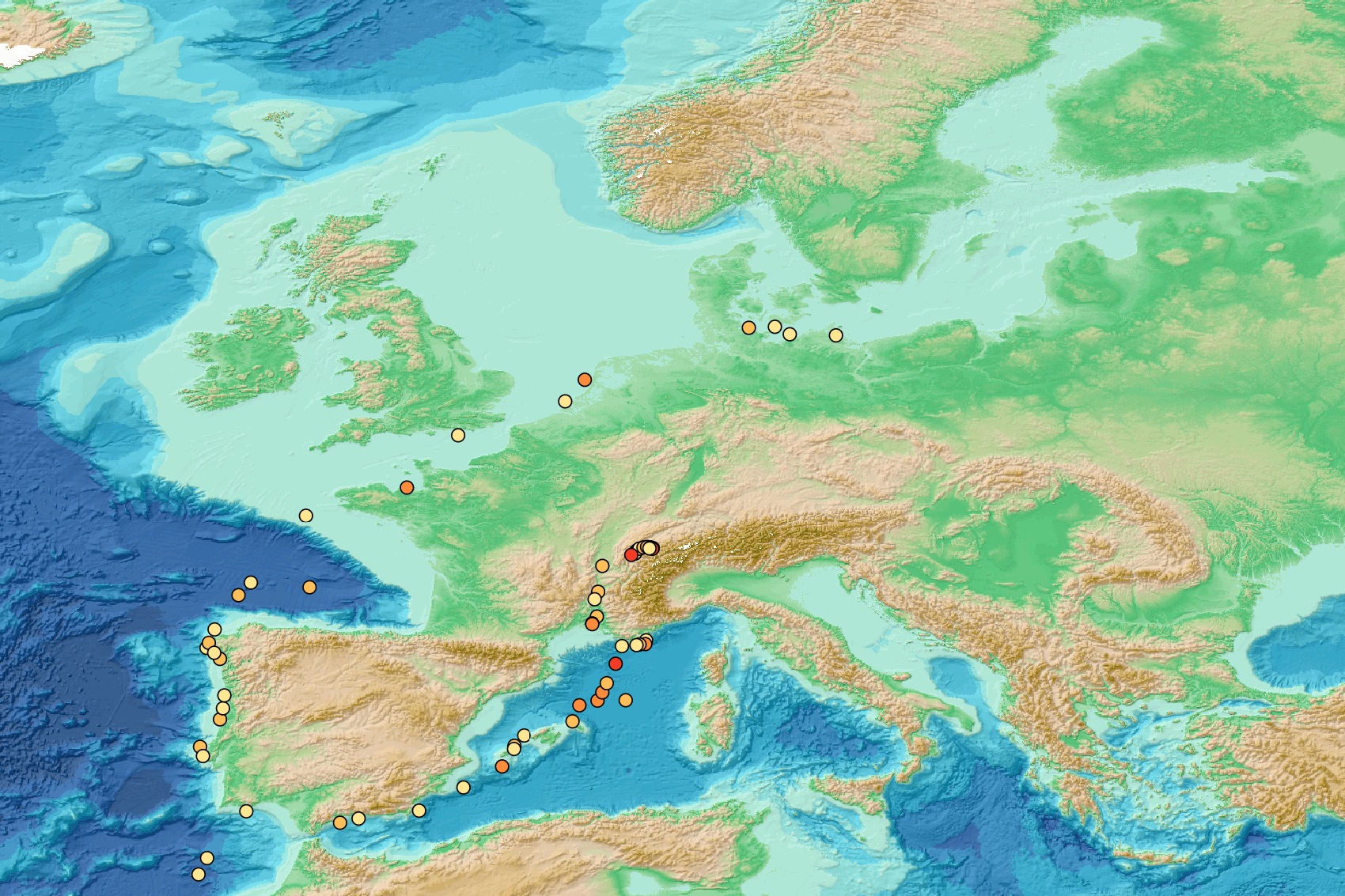Adriatic Sea
Type of resources
Available actions
Topics
Keywords
Contact for the resource
Provided by
Years
Formats
Representation types
Resolution
-
The dataset contains the results of the monitoring activity in distinct years in Slovenian coastal waters related to contaminants in Sea water, sediments and biota.
-
Beach litter monitoring data obtained at Bele Skale beach in Slovenia on 26/01/2024 in project REMEDIES
-
The dataset contains the results of the monitoring activity in distinct years in Slovenian coastal waters related to contaminants in sediments and biota.
-
The dataset contains circalitoral habita types in the Slovenian coastal area. It contains the description of habitat types, EUNIS codes, areas of the habitat and the key species described.
-
The dataset contains the results of the monitoring activity in 2022 in Slovenian coastal waters related to contaminants in sea water.
-
The dataset contains the results of the monitoring activity in distinct years in Slovenian coastal waters related to contaminants in biota.
-
The current dataset contains data on 63 Hz and 125 Hz 1/3 octaves of continuous underwater noise (Descriptor D11.2) recorded on four different locations in two periods (during off tourist season) of December-2018
-
Station_Institute time series 20170101-20181125
-
The regulation published in the Official Gazette of the Republic of Slovenia determines the areas dedicated to aquaculture of specific marine organisms. The areas planned for aquaculture of shellfish are separated from the areas dedicated to the fish aquaculture.
-

This visualization product displays the density of floating micro-litter per net normalized in grams per km² per year from specific protocols different from research and monitoring protocols. EMODnet Chemistry included the collection of marine litter in its 3rd phase. Before 2021, there was no coordinated effort at the regional or European scale for micro-litter. Given this situation, EMODnet Chemistry proposed to adopt the data gathering and data management approach as generally applied for marine data, i.e., populating metadata and data in the CDI Data Discovery and Access service using dedicated SeaDataNet data transport formats. EMODnet Chemistry is currently the official EU collector of micro-litter data from Marine Strategy Framework Directive (MSFD) National Monitoring activities (descriptor 10). A series of specific standard vocabularies or standard terms related to micro-litter have been added to SeaDataNet NVS (NERC Vocabulary Server) Common Vocabularies to describe the micro-litter. European micro-litter data are collected by the National Oceanographic Data Centres (NODCs). Micro-litter map products are generated from NODCs data after a test of the aggregated collection including data and data format checks and data harmonization. A filter is applied to represent only micro-litter sampled according to a very specific protocol such as the Volvo Ocean Race (VOR) or Oceaneye. Densities were calculated for each net using the following calculation: Density (weight of particles per km²) = Micro-litter weight / (Sampling effort (km) * Net opening (cm) * 0.00001) When the weight of microlitters or the net opening was not filled, the density could not be calculated. Percentiles 50, 75, 95 & 99 have been calculated taking into account data for all years. Warning: the absence of data on the map doesn't necessarily mean that they don't exist, but that no information has been entered in the National Oceanographic Data Centre (NODC) for this area.
 EMODnet Product Catalogue
EMODnet Product Catalogue